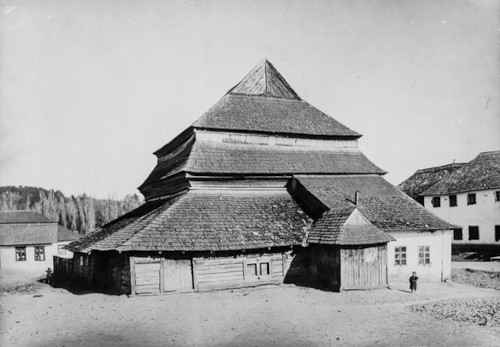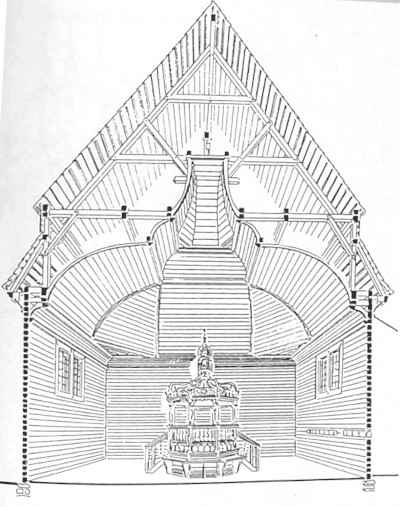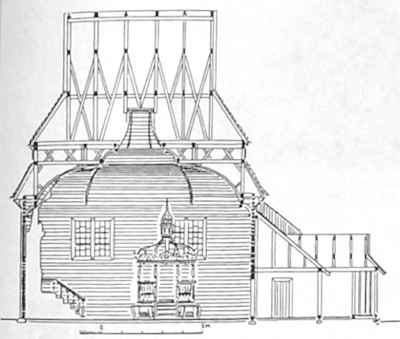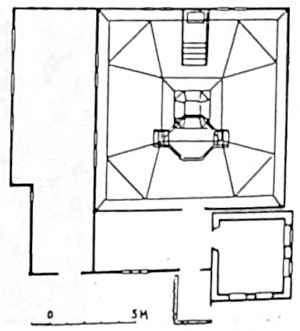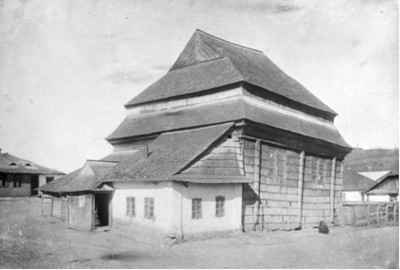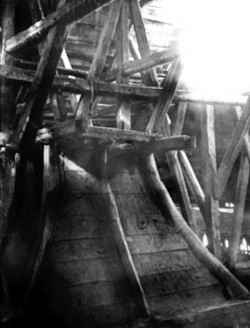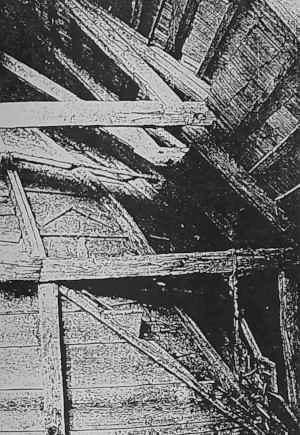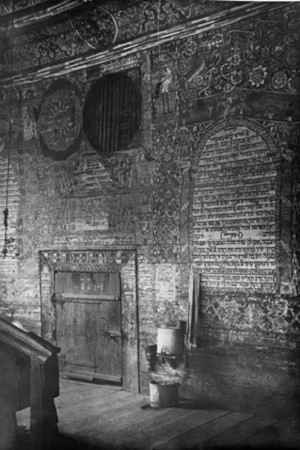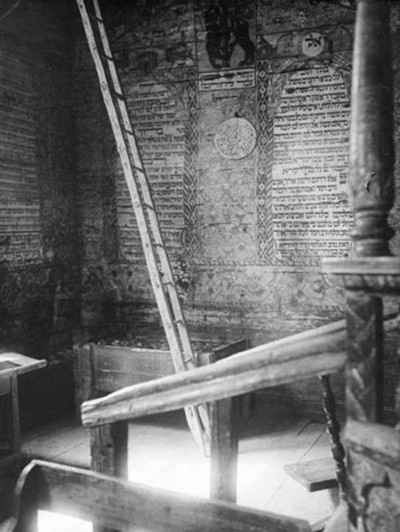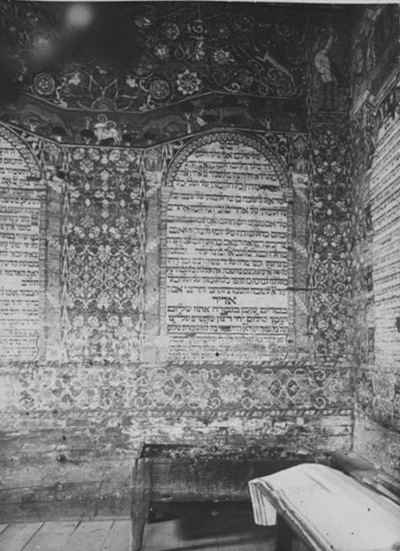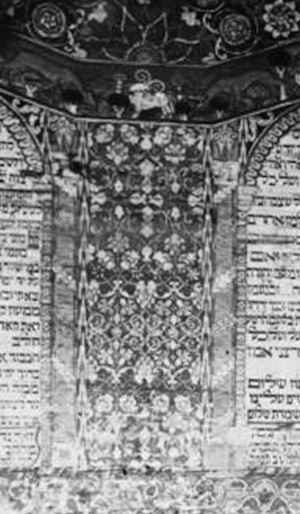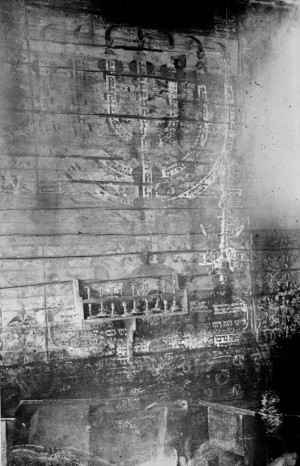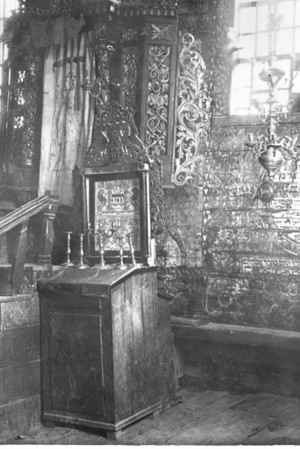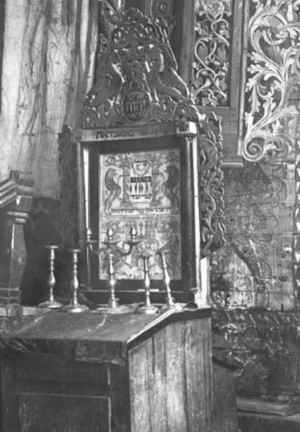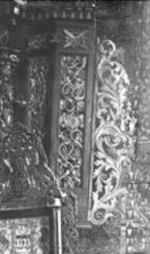The paintings and inscriptions on the walls and the dome:
7. The western wall - the wall with the entrance door.
Those entering the synagogue can see in the upper frame of the entrance door (inside the synagogue), a carved sign from 1718. The door planks do not look original compared to the iron hinges which were made in an ancient style.
Above the door is engraved the inscription (Zephaniah 3, 20): “At that time I will bring you and at that time I will gather you together”. To the right of the door is a container of water to wash the hands and to the right of it is a sheet with the prayer (Kings 8, 57): “May the name of our God be with us as he was with our ancestors…”. Beneath the prayer is the name of the benefactor: “This was donated by the Aluf Asher Baharar Mordechai zt”l (may the memory of the righteous be a blessing) for his son Aharon, so he become great in the Torah, get married and do good deeds, 1673.
On the wall above the door is the inscription (Bava Metzia Nite 59, 70, 1): “Rabbi Elazar said, from the day the Temple was destroyed, the gates of prayer were locked, as it was said…” (Lamentations 50, 8: “Even if I cry out for God and scream, my prayer will not be heard”), and even tough, the gates of prayer were locked, the gates of tears were not locked, as it was said, etc. This was donated by Yosef Ben Yehuda Leib in1721 or 1691. Above this inscription, a (folk) saying “A man worries about losing his blood, but does not worry about losing his days”.
(The continuation of the proverb: “His blood does not help, his days do not return”). |
